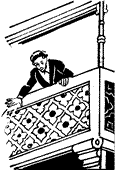
Dimdima
Online Children's Magazine from India

Dimdima
Online Children's Magazine from India
| Heroes and Martyrs | |||||||||
|
| |||||||||
 Between
1908 and 1918 nearly 200 revolutionaries were killed or convicted. The heroes
and martyrs of this period included Sushil Kumar Sen who at the age of fifteen
was given 15 lashes of the whip for striking a police sergeant. The fact that
the policeman was beating up innocent people when Sushil struck him was not
taken into account by the magistrate, Mr. Kingsford.
Between
1908 and 1918 nearly 200 revolutionaries were killed or convicted. The heroes
and martyrs of this period included Sushil Kumar Sen who at the age of fifteen
was given 15 lashes of the whip for striking a police sergeant. The fact that
the policeman was beating up innocent people when Sushil struck him was not
taken into account by the magistrate, Mr. Kingsford.
Sushil Kumar died tragically a few years later on 2nd May 1915. He and a friend
had committed a dacoity to raise money for revolutionary activities and were
fleeing from the police in a boat. Suddenly shots rang out and Sushil Kumar was
struck by a bullet. He knew that his end was near but did not want to be taken
alive. He requested his companion to throw him overboard after cutting off his
head so that he would not be identified and his relatives and friends, harassed.
This his friend reluctantly did. Sushil Kumar was 23 years old at the time of
his death.
On 30th April 1908 a bomb was thrown on a horse-driven coach. The intended
victim was the magistrate Kingsford who was hated for the harsh sentences he
handed down to captured revolutionaries. But Kingsford was not in the coach and
two English ladies were killed instead. The police gave hot chase to the two
teenagers who had thrown the bomb. Prafulla, real name Dinesh Chandra Roy, was
apprehended at a railway station. The youngster whipped out a pistol and to the
horror of the policemen, shot himself. He was about 17 years old.
His companion, Khudiram Bose was later arrested and tried and sentenced to death
by hanging. He was 17. Two years earlier he had been jailed for possessing and
distributing literature on Swadeshi.
Khudiram expressed regret at the death of the two innocent women and when asked
if he was afraid to die, said he wasn't. He ascended the gallows without
flinching.
To the British, Khudiram Bose and the others who waged war against the
government were terrorists. But to their countrymen they were revolutionaries,
brave sons of the soil. Modern historians like Bipin Chandra describe their
activities as revolutionary terrorism ('for want of a better term'). But
whatever their label, no one questioned their love for their country or their
motives. When the revolutionary Kanailal Datta was hanged, his dead body,
according to the historian, R.C. Majumdar, "was carried in a funeral procession
which kings and conquering heroes might envy."
Dimdima is the Sanskrit word for ‘drumbeat’. In olden days, victory in battle was heralded by the beat of drums or any important news to be conveyed to the people used to be accompanied with drumbeats.
Bharatiya Vidya Bhavan
K. M Munshi Marg,
Chowpatty, Mumbai - 400 007
email : editor@dimdima.com
Bharatiya Vidya Bhavan
505, Sane Guruji Marg,
Tardeo, Mumbai - 400 034
email : promo@dimdima.com
Dimdima.com, the Children's Website of Bharatiya Vidya Bhavan launched in 2000 and came out with a Printed version of Dimdima Magazine in 2004. At present the Printed Version have more than 35,000 subscribers from India and Abroad.